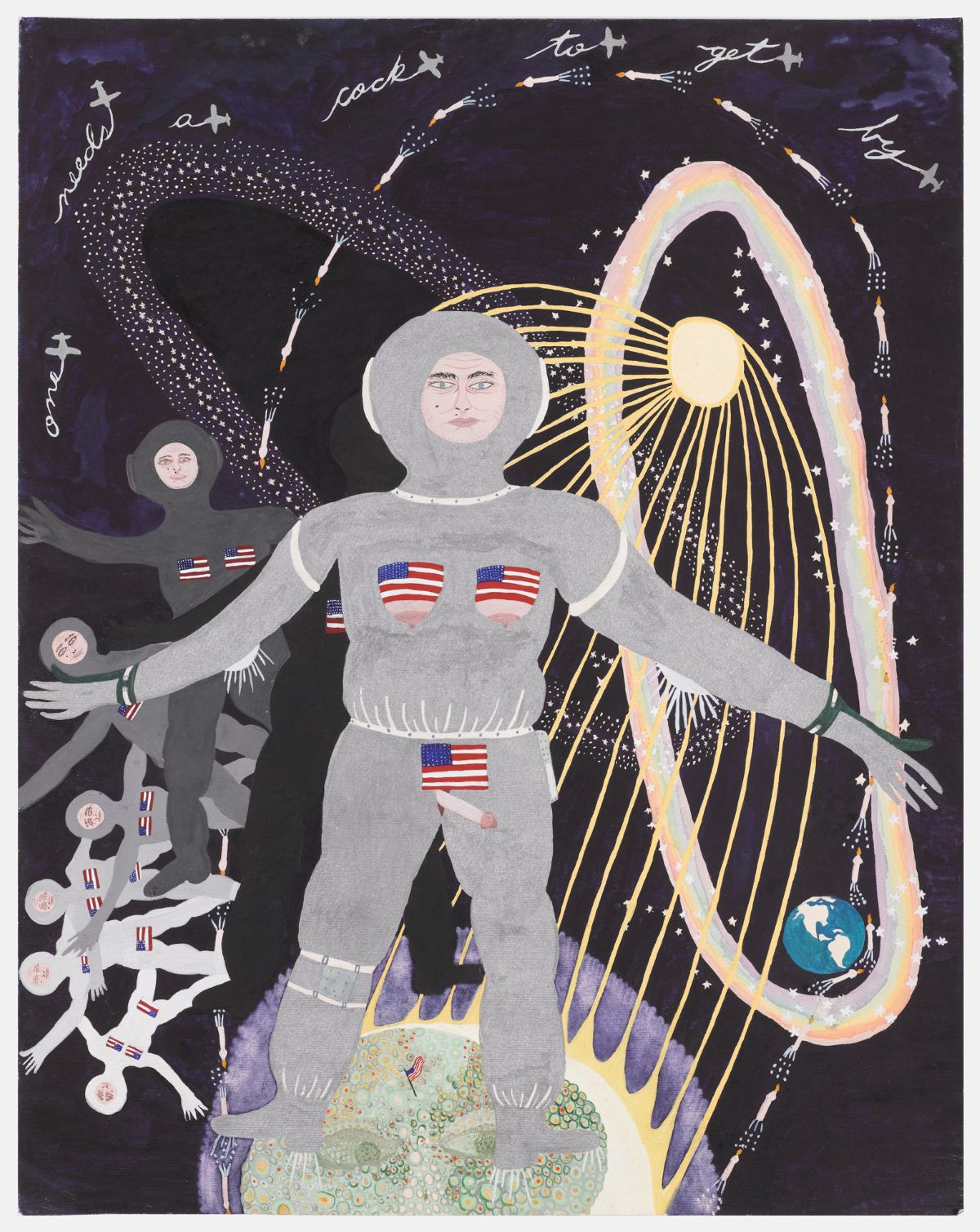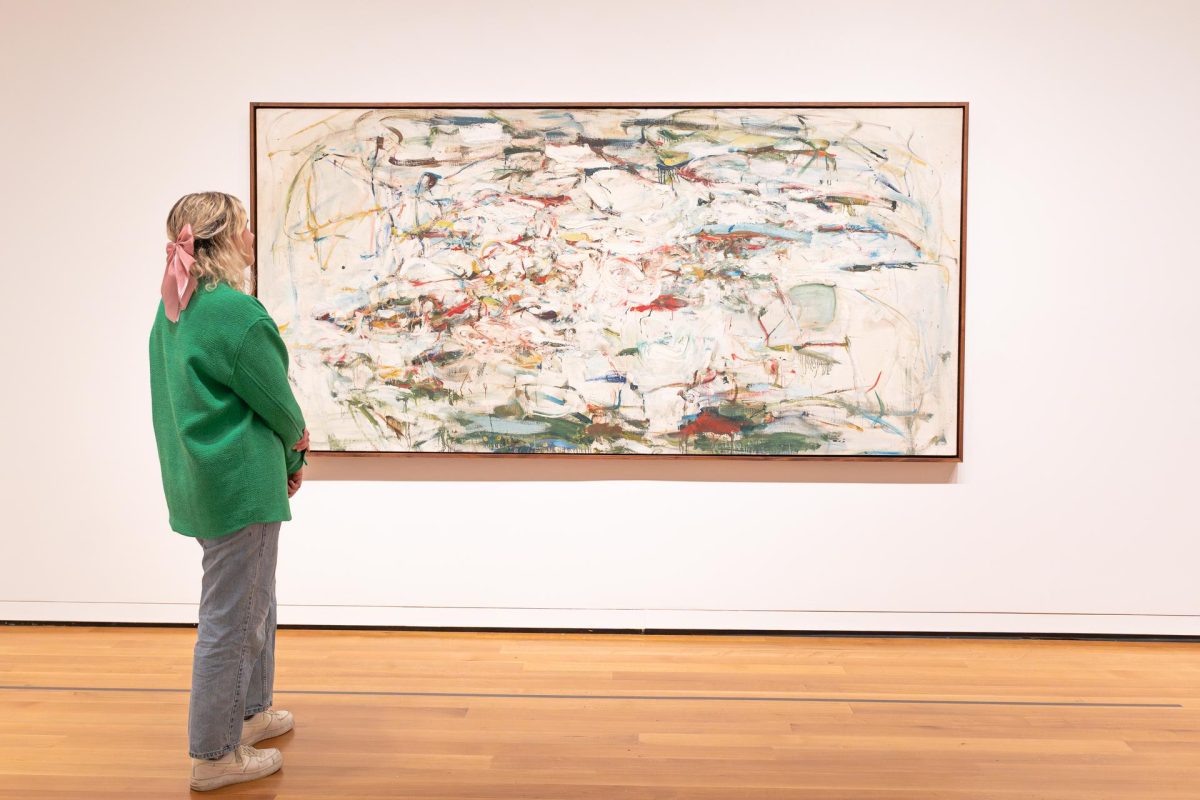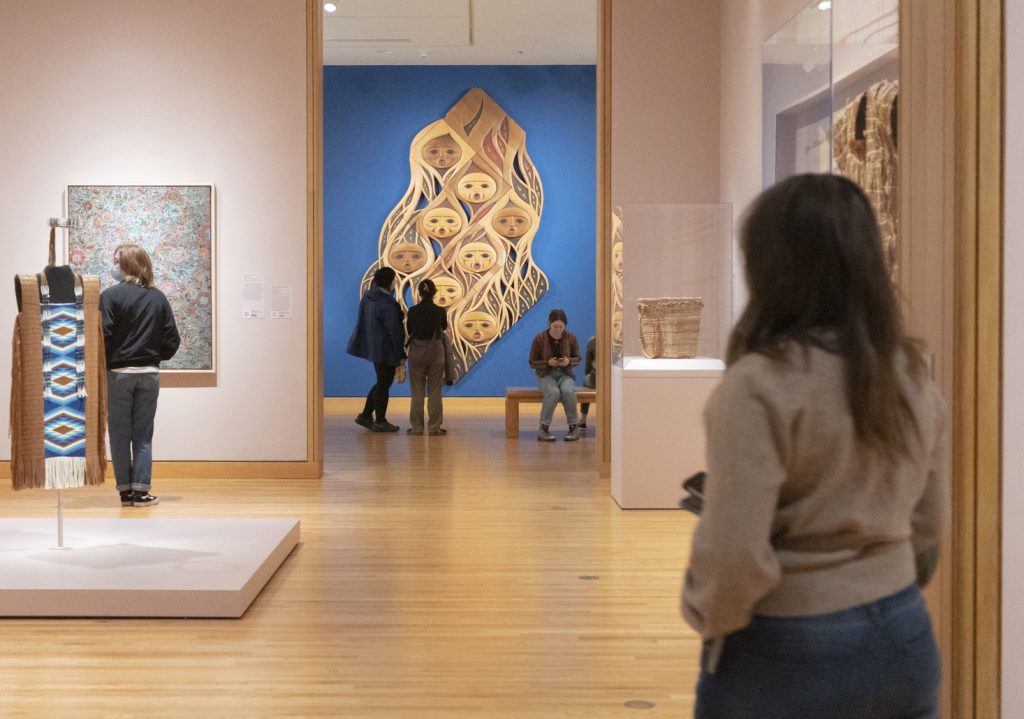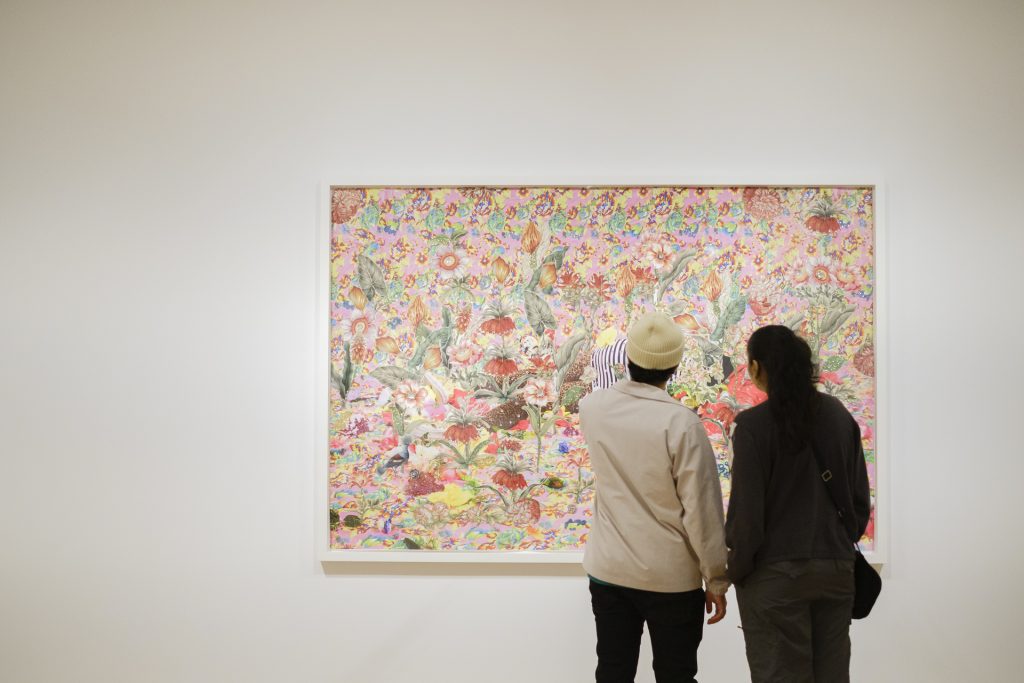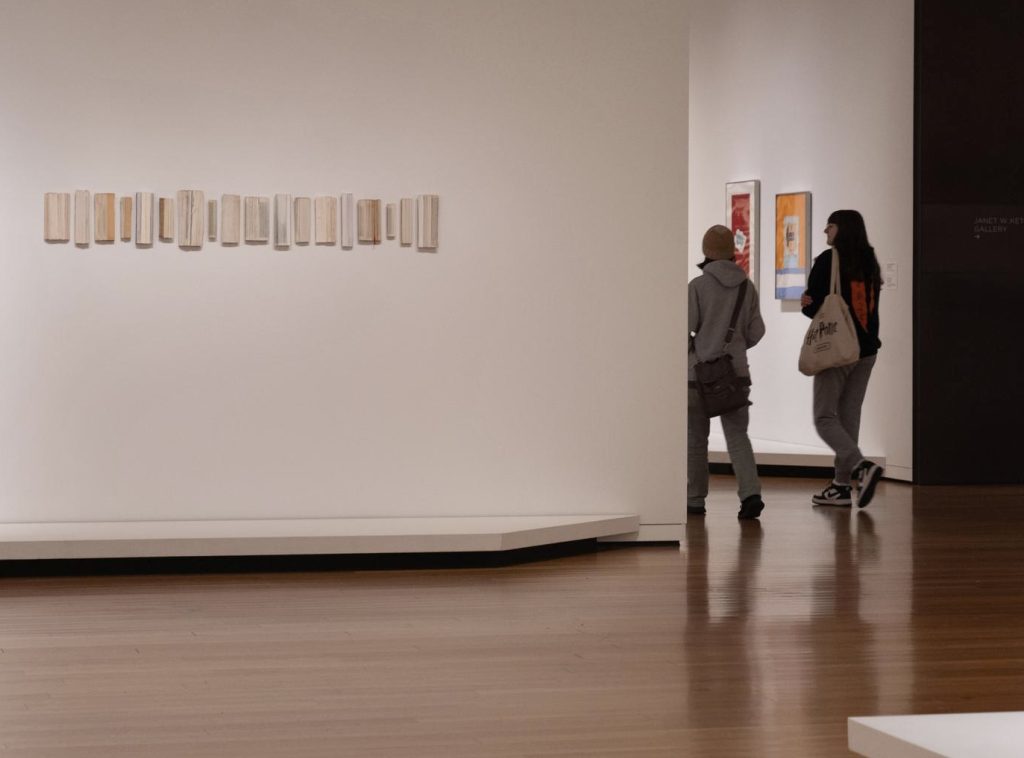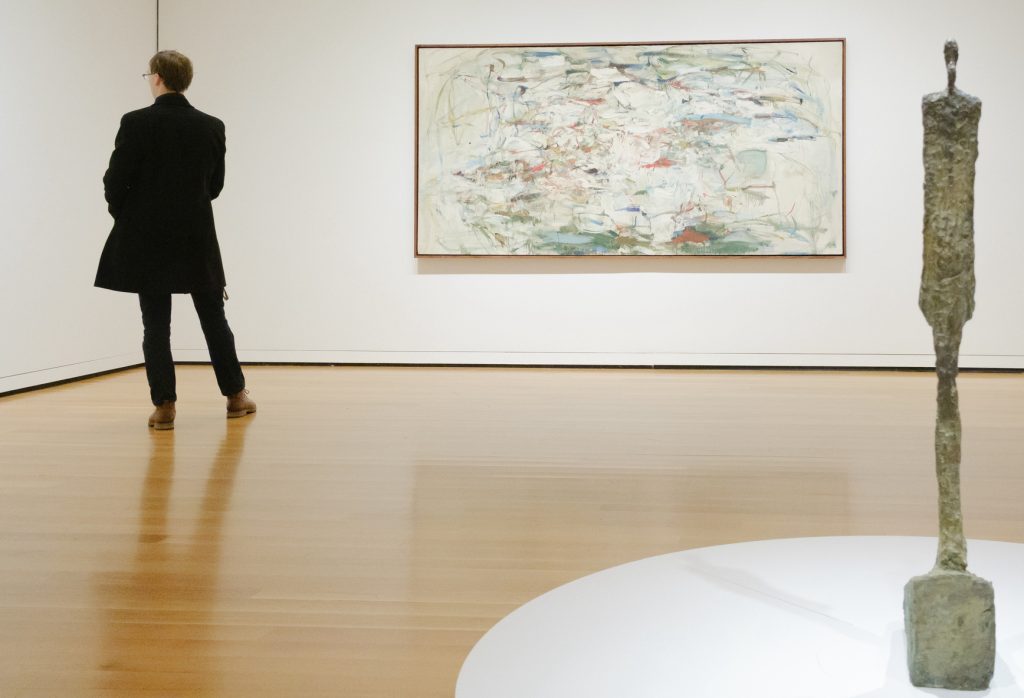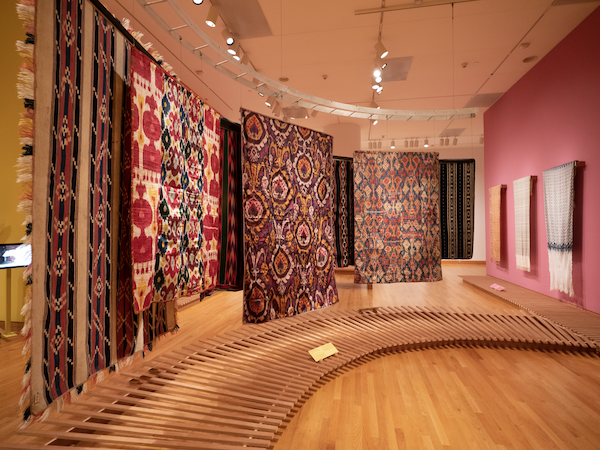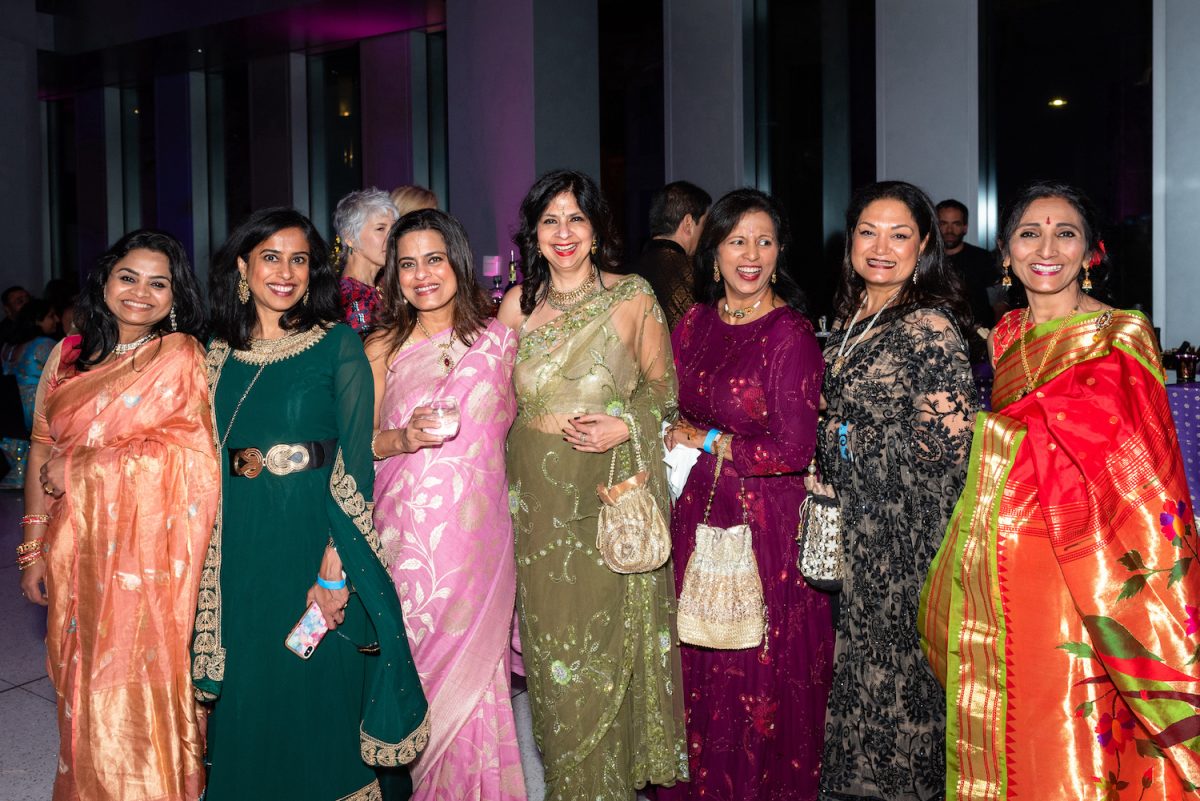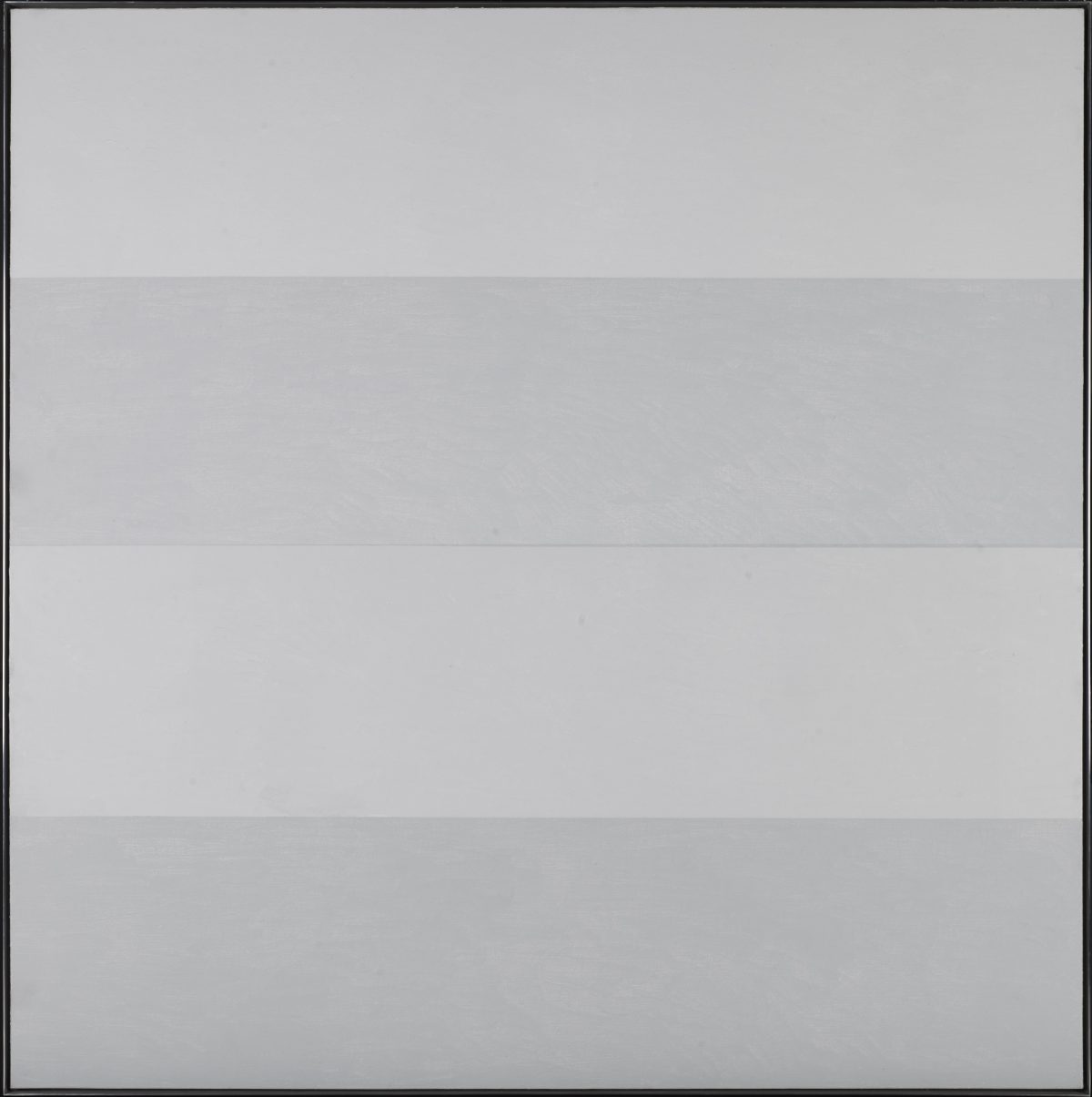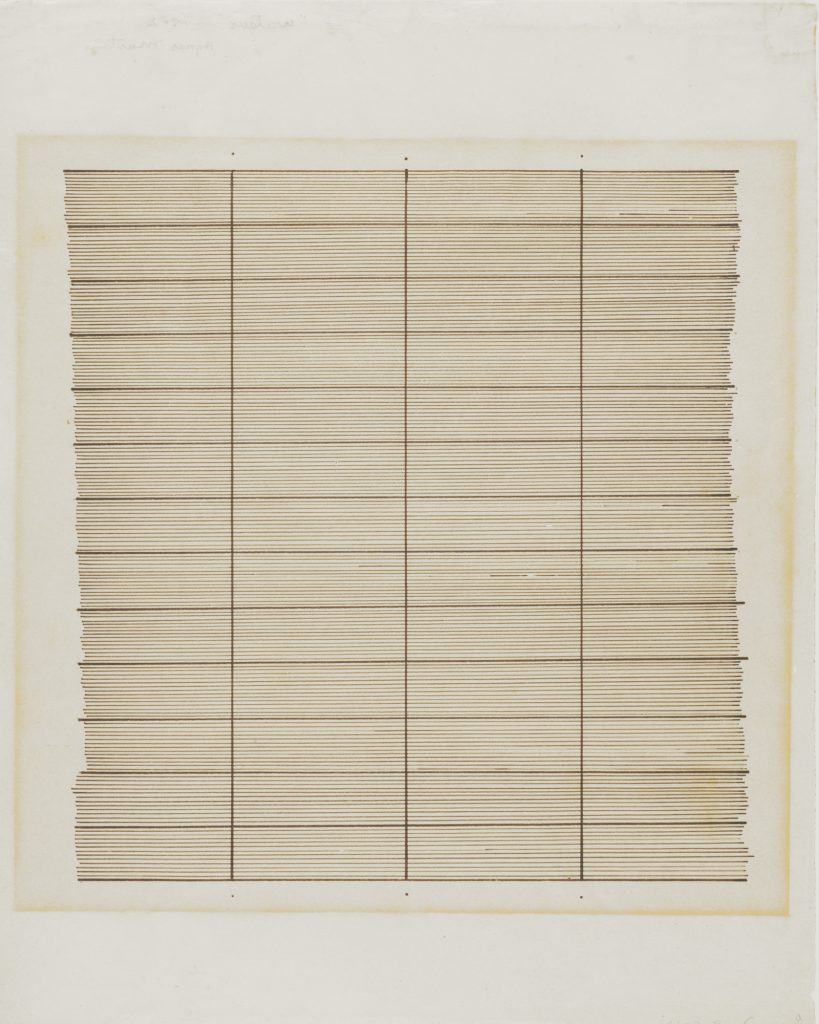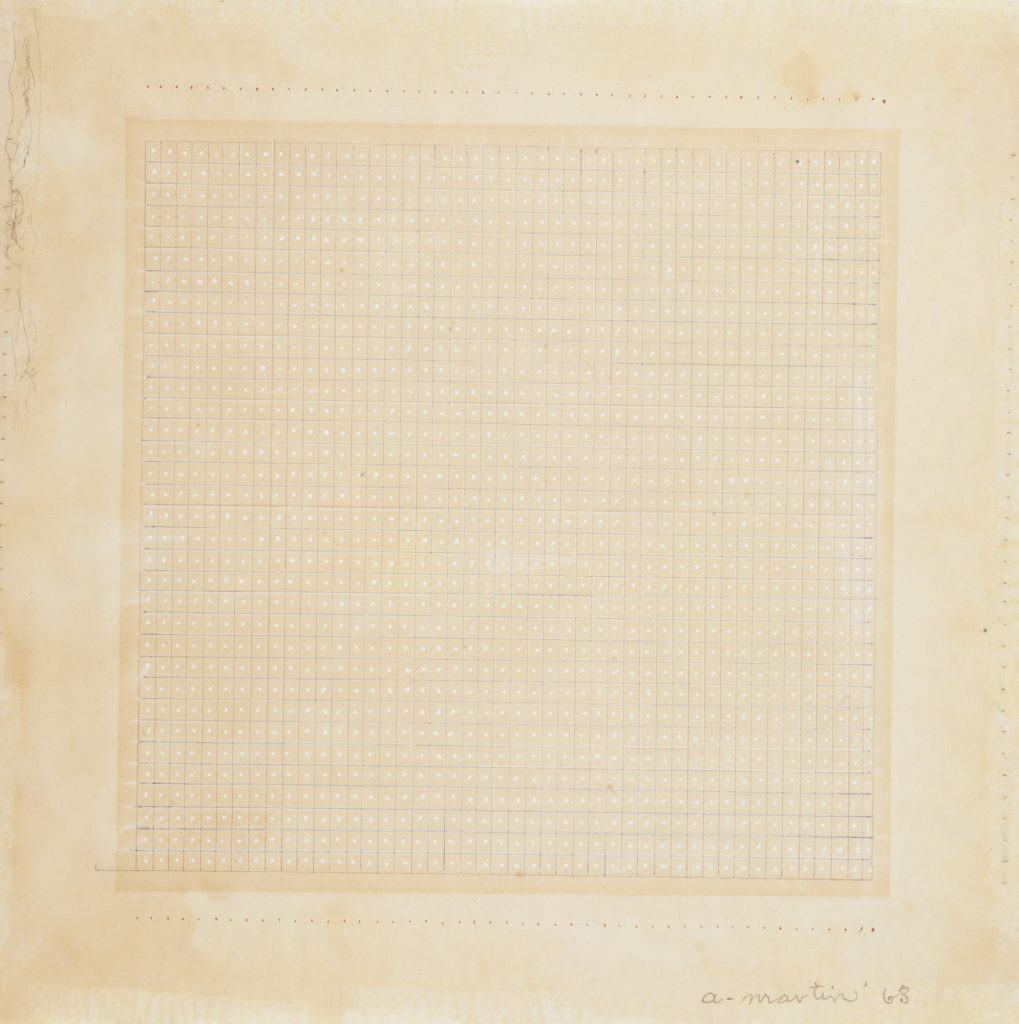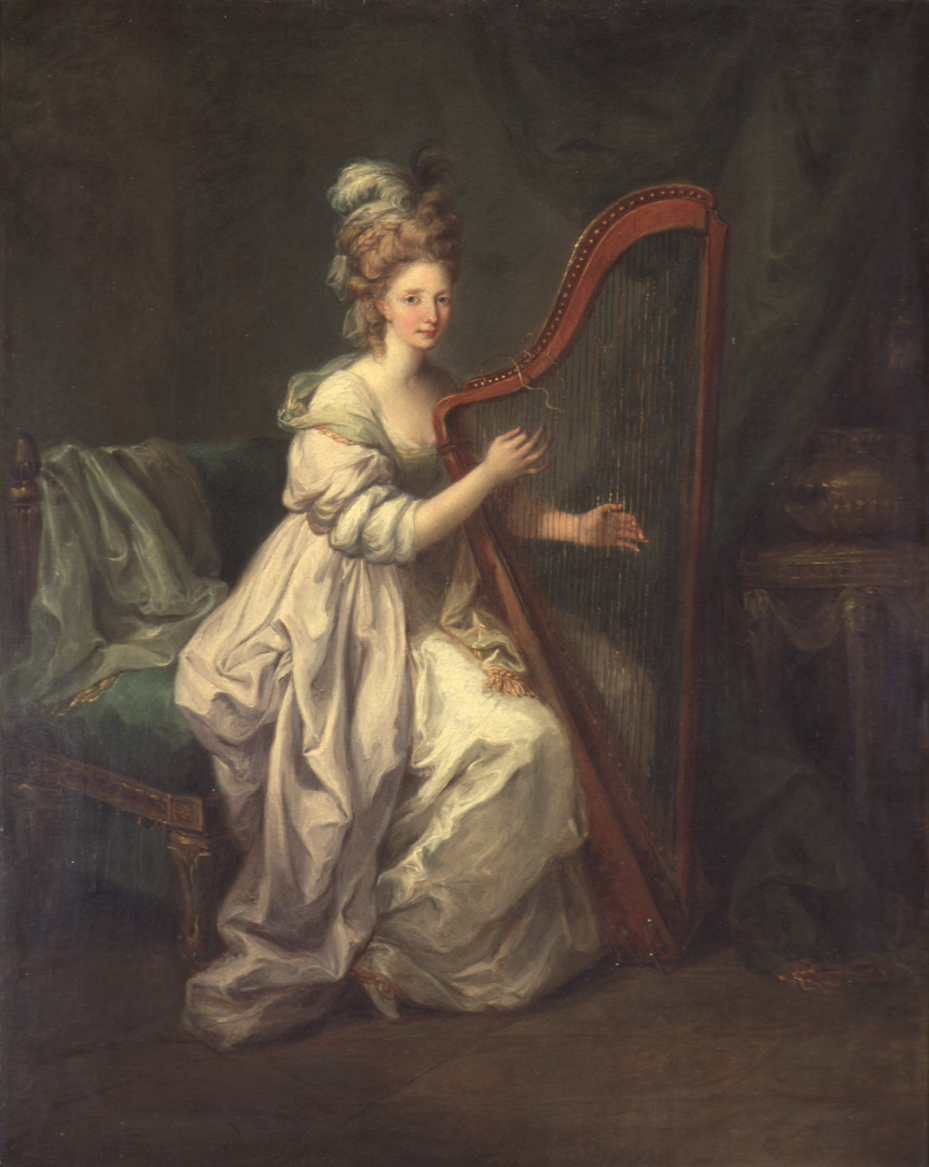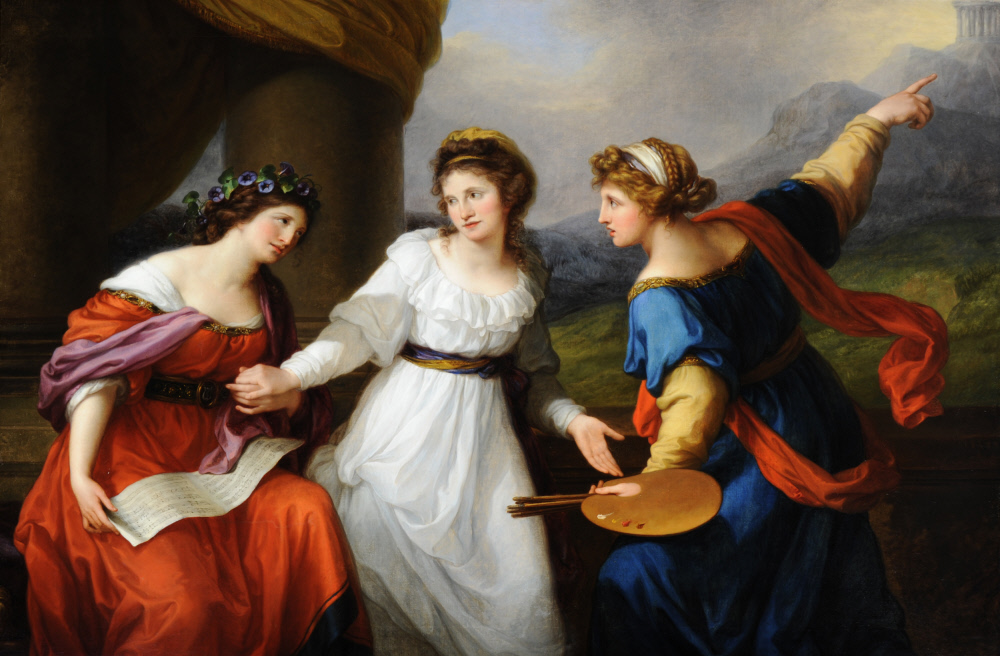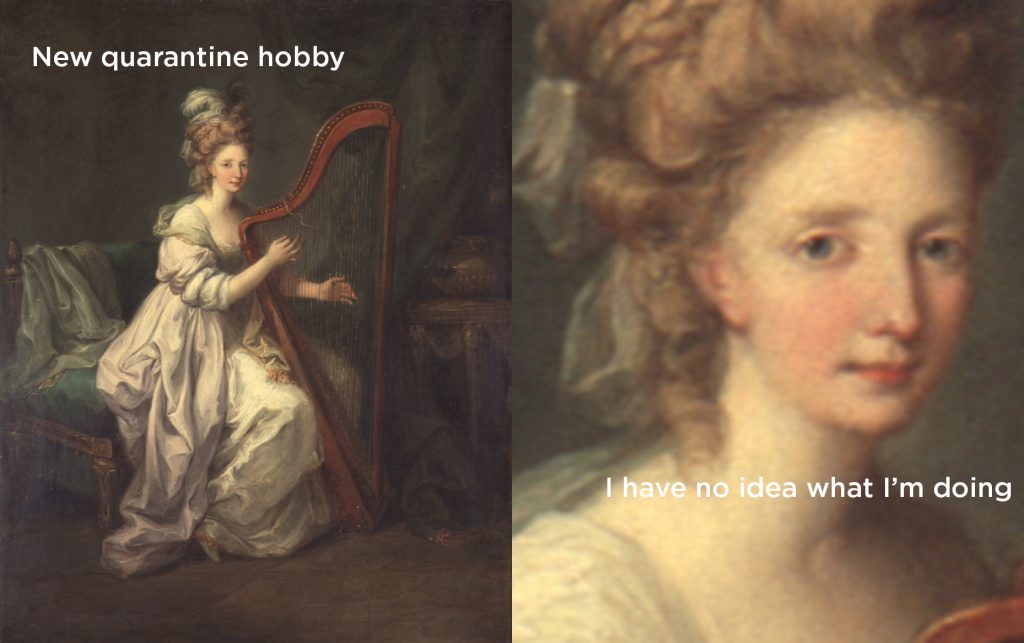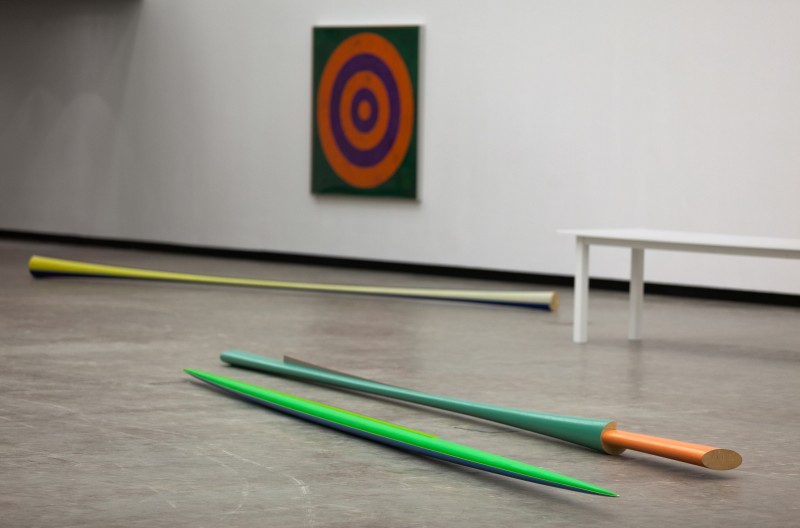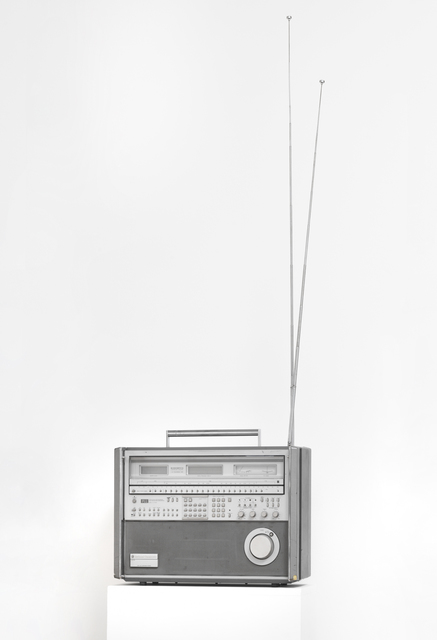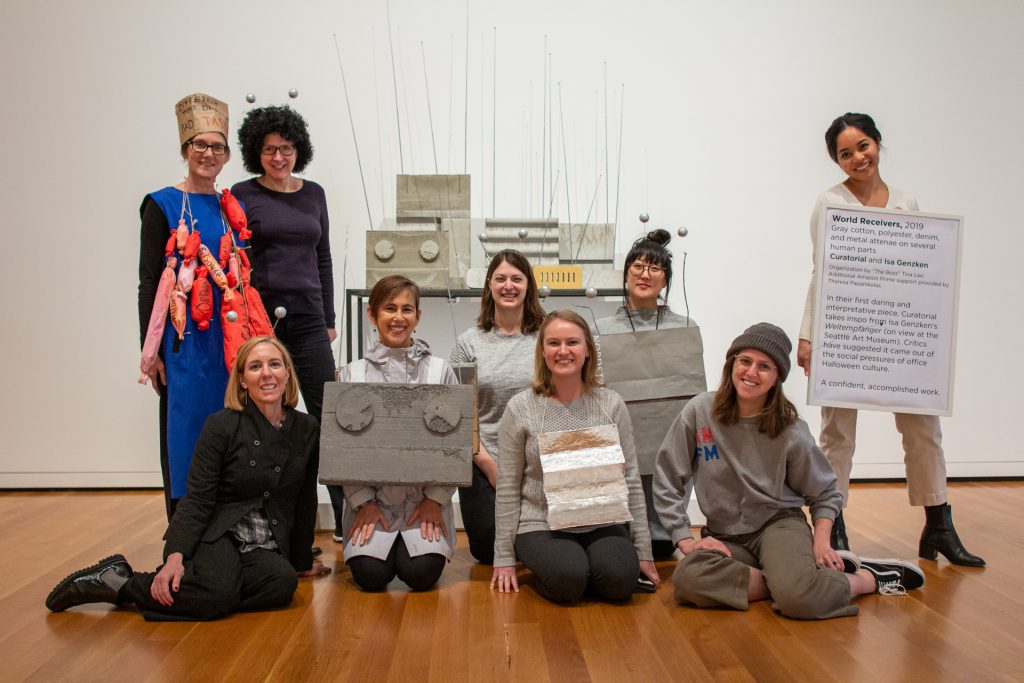Explore Four Artworks by Women Artists in SAM’s Collection That Embody the Spirit of Women’s History Month 2025
Happy Women’s History Month! March is a time to celebrate women’s many contributions to society, which are often overlooked and underappreciated. Let’s take a look at four artworks by talented women artists that dismantle gender stereotypes, honor family matriarchs, and celebrate the female body, among other feminist themes.
Woman Landing on Man in the Moon (1971)
Ann Leda Shapiro
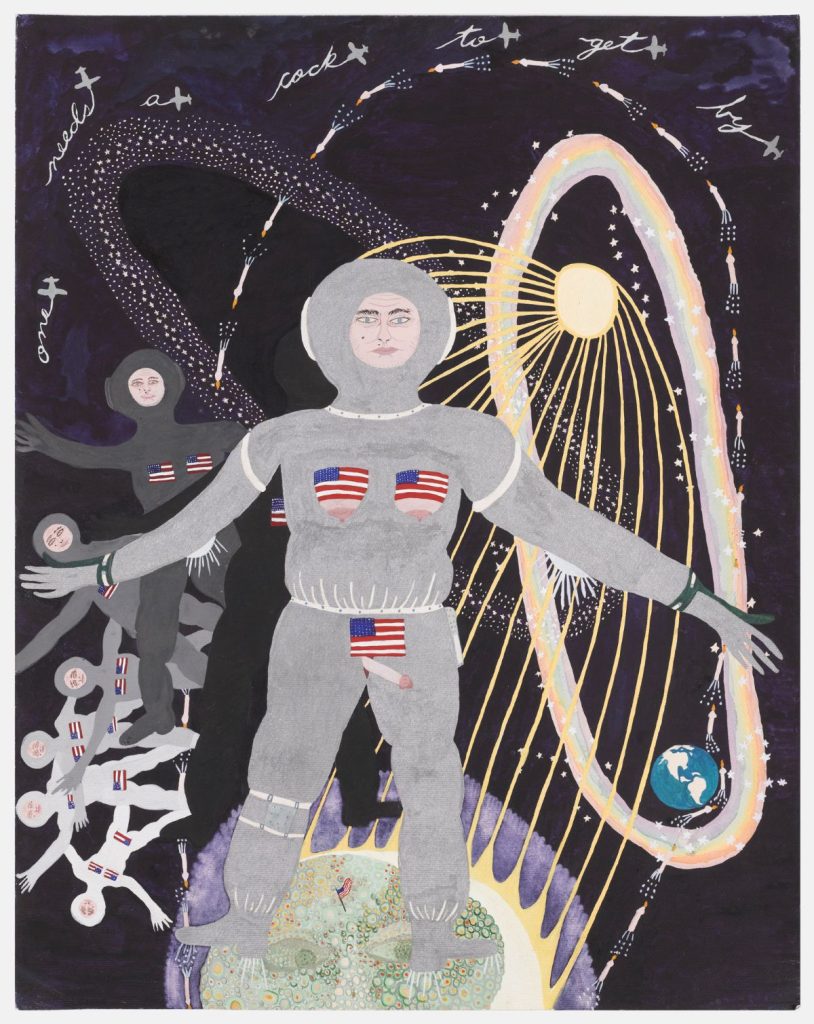
Kicking off the list is Woman Landing on Man in the Moon, a bold watercolor from Ann Leda Shapiro (b. 1947), an artist based on Vashon Island in Washington State. In the 1971 painting, a female astronaut in a silver spacesuit stands tall atop the moon’s surface and shines bright against the cosmic void. Bucking NASA’s dress code, her space getup features three American flag patches with cutouts to expose her breasts…and penis. She stands tall atop the moon’s surface as six male astronauts topple off into the abyss.
Shapiro’s blunt and edgy humor exposes male privilege and highlights the barriers women face to reach the same heights. Through her art and activism, Shapiro has dedicated her career to feminist expression. In the ’80s, she was an early member of the Guerilla Girls, a group of rebellious women artists famous for wearing gorilla masks as they covered NYC with provocative posters, sharing information about sexism and racism prevalent in the art world.
Tiger Lily (1976)
Patti Warashina
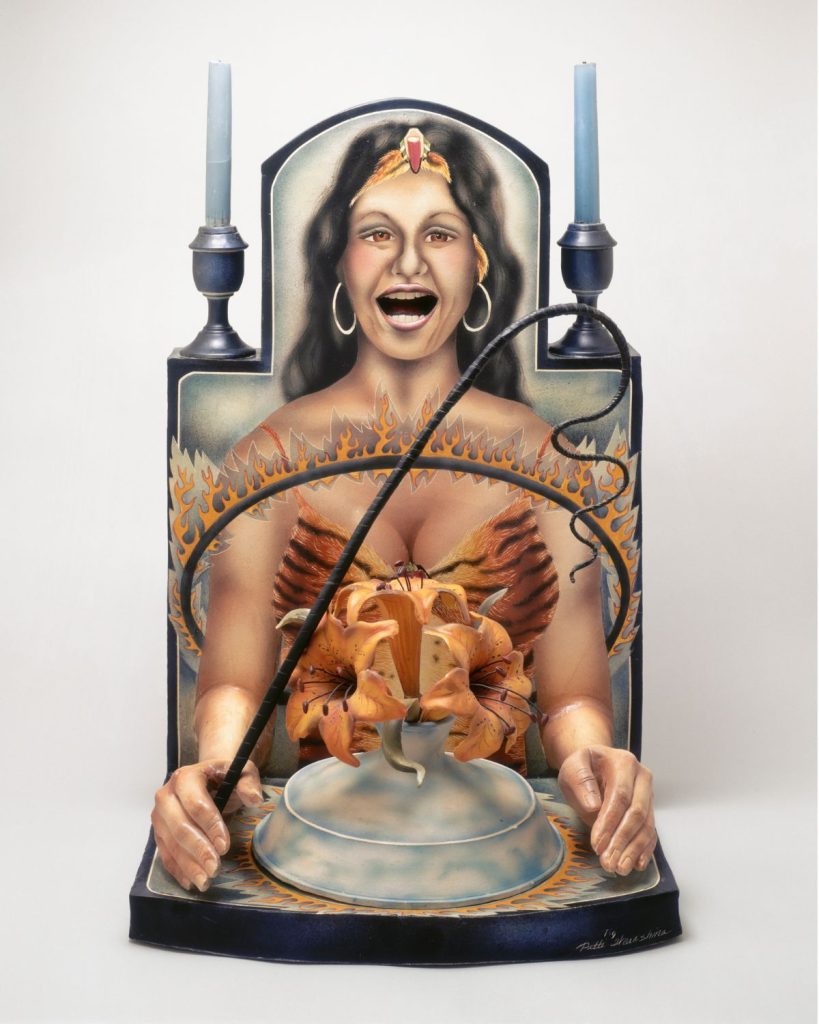
Feminist themes radiate throughout the work of Seattle ceramicist Patti Warashina (b. 1940). Inspired by her grandmother’s religious shrines, Warashina created a 12-part altar series that injects the devious into the divine, unpacking the female dilemma.
Her 1976 sculpture Tiger Lily places a woman between two candles and a blooming flower, common altar elements associated with the Virgin Mary. Yet this woman is far from saintly. Surrounded by a ring of fire and clad in an animal print bodice, she embodies the rebellious Eve. She radiates power and resistance, transforming into a Tiger Goddess.
By utilizing ancient clay techniques, Warashina pays homage to generations of family matriarchs. However, the transformation of these sacred statues into statement pieces flips tradition on its head. Her piece acknowledges the demure behavior women have been expected to embody and seeks to empower them to challenge these gender norms.
Susanna and the Eldest (1981)
Honoré Sharrer
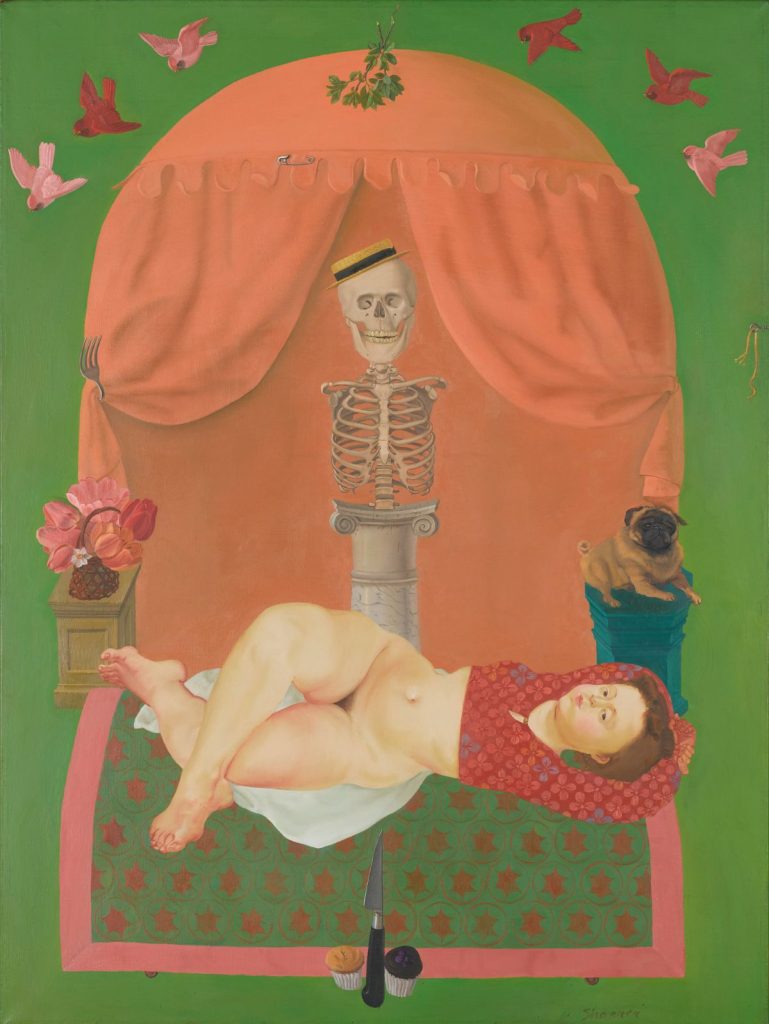
Painter Honoré Sharrer (1920–2009) marched to the beat of her own drum throughout her 75-year career. Tucked away in her rural upstate New York studio, she bucked trending art styles and sometimes spent years on a single painting. Known for her satirical work, Sharrer loved poking fun at female stereotypes and creating alternate realities. She was also drawn to the craft, themes, and metaphors of Northern Renaissance art.
Her 1981 oil painting Susanna and the Eldest is based a tale from the Old Testament about sexual violence. In the story, two men spy on a woman while she is bathing and attempt to force her into having sex, then blackmailing her when she refuses. Eventually, their lies are exposed.
In her reimagining, Sharrer gives Susanna unabridged agency. Instead of the demure victim, as she has been depicted throughout art history, Susanna splays out naked on the floor and stares directly at the viewer. An odd assortment of objects surround her to cultivate a dream-like state in the colorful room. This includes a skeleton in a top hat set upon a plinth that hovers above Susanna—a monument of death upon the leering men of her past?
Fun fact: Susanna and the Elders (Novelty Hotel) by Robert Colescott is another famous piece found in our collection. In Colescott’s acrylic piece, men ogle at a woman stepping out of a hotel bathtub, showcasing the problematic idolization of European beauty.
Stillness #15 (1999)
Laura Aguilar
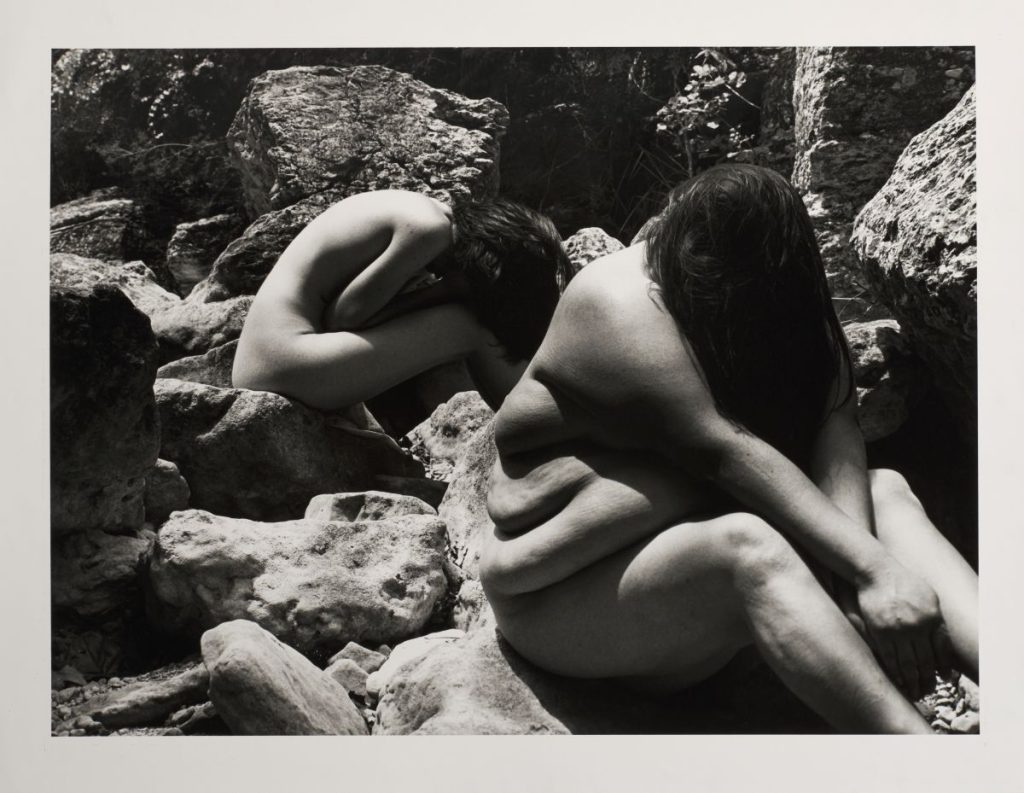
As a Chicana and lesbian photographer, Laura Aguilar (1959–2018) broke barriers by making herself and her community visible in the art world. Sometimes she did this by physically inserting herself into her artwork, as in Stillness #15. This 1999 photograph features Aguilar and another woman perched on rocky terrain, slouched over their naked bodies.
Often in the history of art, nude women with idealized thin, white bodies represent mythological figures or sexual objects. Aguilar complicated these norms by depicting herself and her models in unexpected poses and obscuring their faces. In this black-and-white image, the women become part of the environment—their curves, creases, and textures echo the rocks around them.
Stillness #15 focuses on both the body and the mind. Aguilar explained that this series stemmed from her experience as a caretaker for her dying father; during this time, she began contemplating spirituality. Aguilar’s use of the female nude is not about beauty or ideals—it’s about reckoning with grief, mortality, and self-exploration.
Sadly, Aguilar passed away in 2018, but her powerful contribution to the art world lives on.
– Sara Butler, Marketing Copywriter and Nicole Block, Collections Associate
Image credits: Woman Landing on Man in the Moon, 1971, Ann Leda Shapiro, American, b. 1947, Watercolor on paper, 20 x 14 in. (50.8 x 35.6 cm), Seattle Art Museum, Gift of Matthew Offenbacher and Jennifer Nemhauser with funds from the 2013 Neddy Award in Painting, 2015.2.3, ©Ann Leda Shapiro, Photo: Elizabeth Mann. Tiger Lily, 1976, Patti Warashina, American, b. 1940, Low-fire ceramic with acrylic, 24 x 15 7/8 x 13 1/4 in. (60.96 x 40.31 x 33.66 cm), Seattle Art Museum, Gift of the artist, 89.78, ©Patti Warshina. Susanna and the Eldest, 1981, Honoré Sharrer, American, 1920-2009, Oil on canvas, 41 x 30 in. (104.1 x 76.2 cm), Seattle Art Museum, Gift of Adam Zagorin and Perez Zagorin, 2012.16.1, © Adam Zagorin, Photo: Elizabeth Mann. Stillness #15, 1999, Laura Aguilar, American, 1959-2018, Silver gelatin print, 16 x 20 in. (40.6 x 50.8 cm), Seattle Art Museum, General Acquisition Fund, 2021.39.1, © Laura Aguilar, Photo: Scott Leen.
